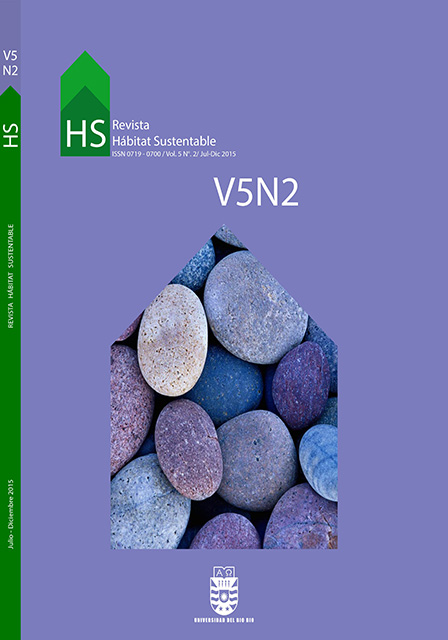Inhabiting drylands: Raw earth as a medium for habitability in the non-irrigated territory in the north of Mendoza Province, Argentina
Keywords:
social habitat, drylands, collective construction, raw earth, adobeAbstract
The non-irrigated territory in the north of Mendoza Province is a vast space without access to water resources that is inhabited by a scattered peasant population with native Huarpe origins. For centuries, dwelling in this territory has been a challenge due to both the climate/environment and sociopolitical conditions. Therefore, the drylands habitat has specific characteristics regarding its form of management (autonomous), adaptation to the environment, and the use of the raw earth construction technique, adobe. This research focuses on the current use of adobe, which is conceived as a medium that facilitates the self-building and self-production of housing solutions in deprived populations, and adapts dwellings to the consequences of an arid territory and a long process of rights infringement. This article presents the first results of surveys conducted on the adobe construction technique (using quantitative techniques: survey and samples in situ) and the characteristics of the social habitat of the native Huarpe population based on the participant observation technique.
Downloads
References
Guerra Ramírez, José. Una arquitectura para el Desierto. Revista AUS, 2006, n°2, pp. 10-12.
Instituto Provincial de la Vivienda Mendoza [en línea]. [Consultado 20 dic. 2015] Disponible en: http://www.ipvmendoza.gov.ar/programas/programas/ProgramasEnUSO/PROGRAMAS_HABITACIONALES_EN_USO2.pdf
Ley Nacional N° 23.302 de Asuntos Indígenas [en línea], 1985. [Consultado 15 dic. 2015] Disponible en: http://coleccion.educ.ar/coleccion/CD9/contenidos/documentos/doc12/index.html
Ley Provincial N° 6920. Reconocimiento preexistencia étnica cultural del Pueblo Huarpe Milcallac, respeto por la identidad. Adhesión a la Ley Nacional 23302. Instituto Nacional de Asuntos Indígenas. Declaración de la utilidad pública de la expropiación del terreno [en línea], 2001.[Consultado 15 dic. 2015] Disponible en: http://www.ipvmendoza.gov.ar/programas/programas/ProgramasEnUSO/Pueblos%20originarios/Ley%206920.htm
Programa Federal de Vivienda y Mejoramiento del Hábitat de Pueblos Originarios y Rurales (Res. 1611-2013) [Consultado 15 dic. 2015] Disponible en: http://www.ipvmendoza.gov.ar/programas/programas/ProgramasEnUSO/Pueblos%20originarios/1611-13.pdf
Ponte, Jorge Ricardo. Mendoza, aquella ciudad de barro. Historia de una ciudad andina desde el siglo XVI hasta nuestros días. Mendoza: CONICET, 2008.
Raffa, Cecilia y Pastor, Gabriela. Representaciones, turismo y Estado. Imágenes y discursos en torno de los paisajes culturales de Mendoza (Argentina). Pasos Revista de Turismo y Patrimonio Cultural, 2012, vol. 10
Downloads
Published
How to Cite
Issue
Section
License
The content of articles which are published in each edition of Habitat Sustentable, is the exclusive responsibility of the author(s) and does not necessarily represent the thinking or compromise the opinion of University of the Bio-Bio.
The author(s) conserve their copyright and guarantee to the journal, the right of first publication of their work. This will simultaneously be subject to the Creative Commons Recognition License CC BY-SA, which allows others to share-copy, transform or create new materials from this work for non-commercial purposes, as long as they recognize authorship and the first publication in this journal, and its new creations are under a license with the same terms.











 Scientific Information Program/Concurso Fondos de Publicación de Revistas Científicas 2018/ Proyecto Mejoramiento de Visibilidad de Revistas UBB (Código:FP180007).
Scientific Information Program/Concurso Fondos de Publicación de Revistas Científicas 2018/ Proyecto Mejoramiento de Visibilidad de Revistas UBB (Código:FP180007).





